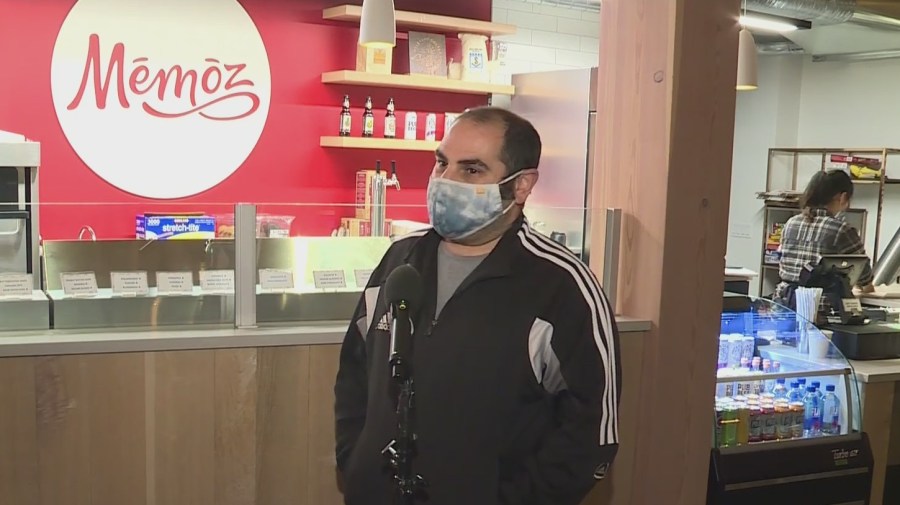PORTLAND, Ore. (KOIN) — As the coronavirus pandemic continues, people are likely familiar with the 3 C’s of things to avoid: crowded spaces, close contacts without masks and confined spaces with poor ventilation.
But they are more important than ever as all of Oregon — indeed, the United States — is in the midst of a COVID spike that is sending record numbers of people to hospitals here and around the country.
On Wednesday, Gov. Kate Brown announced a new health and safety framework to combat COVID-19 that will go into place when the entire state ‘freeze’ ends on December 3.
The state will start categorizing counties by risk level — Extreme Risk, High Risk, Moderate Risk, and Lower Risk — and different health and safety measures will apply.
Multnomah County — along with 20 of the other 36 Oregon counties — is in the Extreme Risk category. On Friday, Multnomah County officials announced they would comply with these new health and safety guidelines.
‘We tried to survive as long as we could’
But even the slightly looser restrictions were too much for Aaron Allina, the owner of Memoz Dessert Cafe.
While he said the understands why they are in place, there just weren’t enough takeout orders to keep the lights on.

At Memoz, customers choose the dough and the toppings and their dessert is baked fresh right in front of them.
“We are the first of its kind anywhere, really,” Allina said. “We let you put in whatever you want, chocolates, nuts, fruits, seasonings etc., then we mix it together and bake it fresh in under 2 minutes.”
He said he spent his life savings to open the dessert cafe on North Williams and named it after his mom.
“February, we had our best month ever,” he said. “We were doing great, super busy.”
At that point Memoz had been in operation for a little over 9 months with steadily growing sales. Then the pandemic hit.
“Business dropped off. It’s like, like a cliff.”
The latest COVID-related freeze allows takeout-only, although restrictions will ease slightly December 3 to allow outdoor dining in Multnomah County.
But that’s not enough for Aaron Allina.
“We tried to survive as long as we could, you know. You keep hoping something is going to happen, something is going to change and things will start coming back. But, really, we came to the realization that there just isn’t an end in sight.”
21 counties listed as in ‘Extreme Risk’
In these 21 counties, these activities will be allowed with health and safety protocols in place:
- Social gatherings in and out of your home limited to 6 people, with a recommended limit of 2 households
- Restaurant, bars and other eateries are limited to outdoor dining only, with a maximum of 50 people and only 6 per table. Take-out is encouraged
- Indoor recreation, fitness, and entertainment establishments, including gyms, will stay closed
- Outdoor recreation, fitness, and entertainment activities, including outdoor gym activities, are allowed, with a maximum of 50 people
- Retail stores, grocery stores, pharmacies, and indoor and outdoor shopping centers and malls will be limited to 50% of capacity. Curbside pick-up encouraged
- Faith institutions, funeral homes, mortuaries, and cemeteries limited to 25% capacity, or 100 people indoor (whichever is smaller), or 150 people outdoor
- Work-from-home to the maximum extent possible is required for office workplaces
- Public-facing offices are closed to the public
- Personal services businesses can to continue to operate with health and safety measures in place
- Long-term care facilities can allow limited outdoor visitation, following established health and safety protocols
Health Officer Dr. Jennifer Vines said the region is still looking at a potential spread that could overwhelm the health care system in the next few weeks.
“We can all do our part by limiting how much we mix with people outside our households, regardless of formal restrictions,” she said.
Multnomah County Chair Deborah Kafoury said the area is “going to be in this crisis for the foreseeable future.” She said they continue to look at options that keep the “health and welfare of our community” at the top of their priority list.
So while you should avoid the 3 C’s, there are now-familiar things you can and should do: Wear a mask whenever you’re with someone from outside your household, wash your hands, maintain social distance of at least 6 feet, and open windows and doors to improve the air flow.